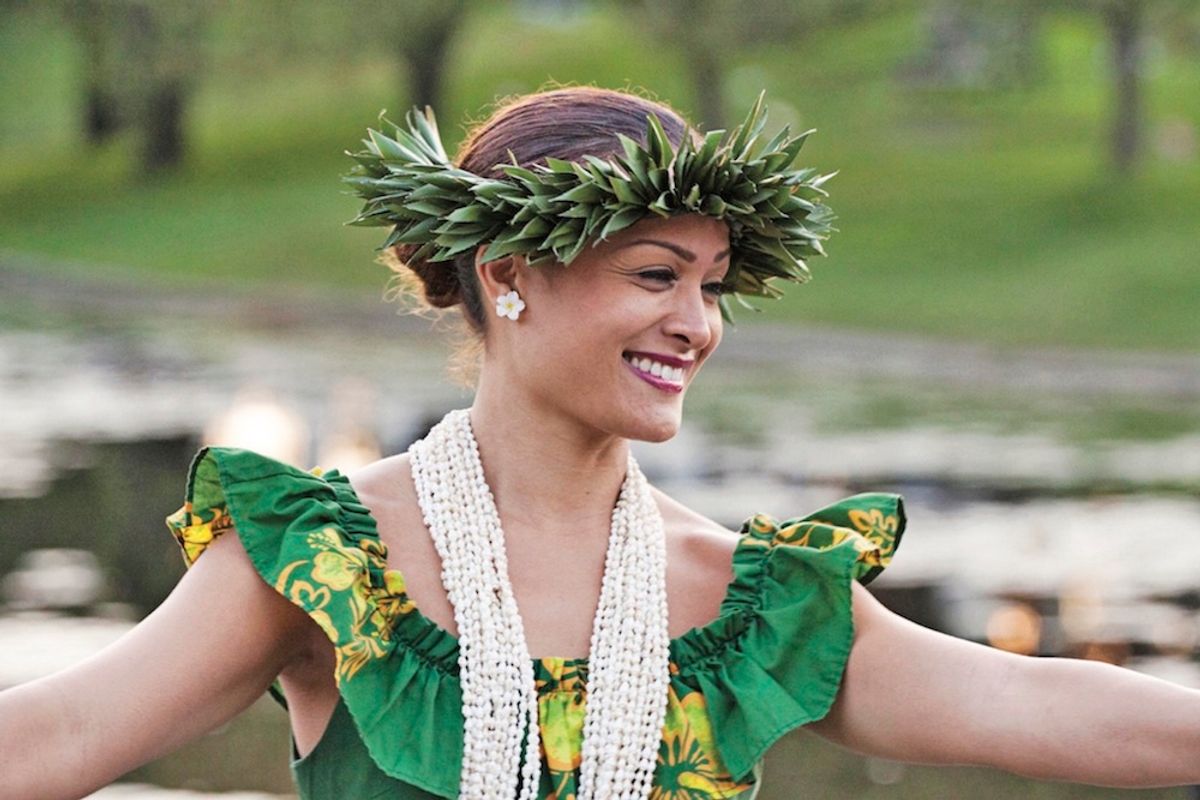
As a hula instructor at the 92nd Street Y in New York City, Hawaii native Kaina Quenga is committed to sharing the traditional dances and culture of Polynesia with the people of the Big Apple. Through training with famed kuma hula (master teacher) Johnny Lum Ho of Halau O Ka Ua Kani Lehua, Quenga developed a respect for and understanding of the artform that has carried her through the nearly 20 years of her professional career.
In spite of her success as a teacher at 92nd Street Y (she also teaches at Concourse House Day Care in the Bronx and Spoke the Hub Dancing in Brooklyn, and offers free classes in various parks around NYC during the spring and summer), Quenga never anticipated becoming an educator. “I really just lucked into it—I’m not a kuma hula,” she says. One can only become an official hula master teacher when their own kuma hula bequeaths knowledge to them through a formal ceremonial ritual after years of training. “But when I came to New York, everyone kept asking me if I would teach classes. There was a need for it. So I started teaching the basics.”
She starts her beginner classes by explaining that hula is based in the Hawaiian language. Each dance tells a story, she says, and without words there can be no hula. “The words are more important than the actual dance.” A native Hawaiian-language speaker, Quenga is able to translate the words so her students can connect to them on a personal level. “In a hula that I teach, we talk about gathering seaweed down by the sea,” she says. “I love that hula, because I love seaweed. One of my students said she didn’t like seaweed, so she made her movement match the way she felt. She couldn’t have done that if she didn’t understand the words. I teach my dancers to connect to the story in the way it relates to them rather than just memorize steps. It makes it so they actually feel something.”
Throughout class Quenga prompts her students to turn away from the mirror and focus on basics like ka’o (the way the hips sway in hula). “It’s a lateral pelvic shift with a curve,” she says. “It’s very specific and unique to Hawaiian dance and can only be broken down or learned with a teacher present. You can’t learn it from YouTube. There are rituals that are connected to the sacred practice of hula. Hula is a sacred dance form.”
Required dancewear for class. “When dancers come to hula classes, they should wear a Pa’u hula skirt that covers their knees. It’s part of your hula and changes the entire tone of your learning.”
Must-have costume details. “When dancers become more advanced, they’re expected to wear leis that cover their body. While most hula dancers create their own costumes, these products can also be found on hula-ohana.com.”
Choreography Inspiration. “Hula is inspired by nature, so the dances that I teach acknowledge and celebrate our deep relationship to our environment, our community and our history.”
How she stays organized. “I write things down in a notebook and maintain a checklist that I constantly refer to.”
Favorite teaching phrase. Ma ka hana ka ‘ike (The knowledge is in the doing).




